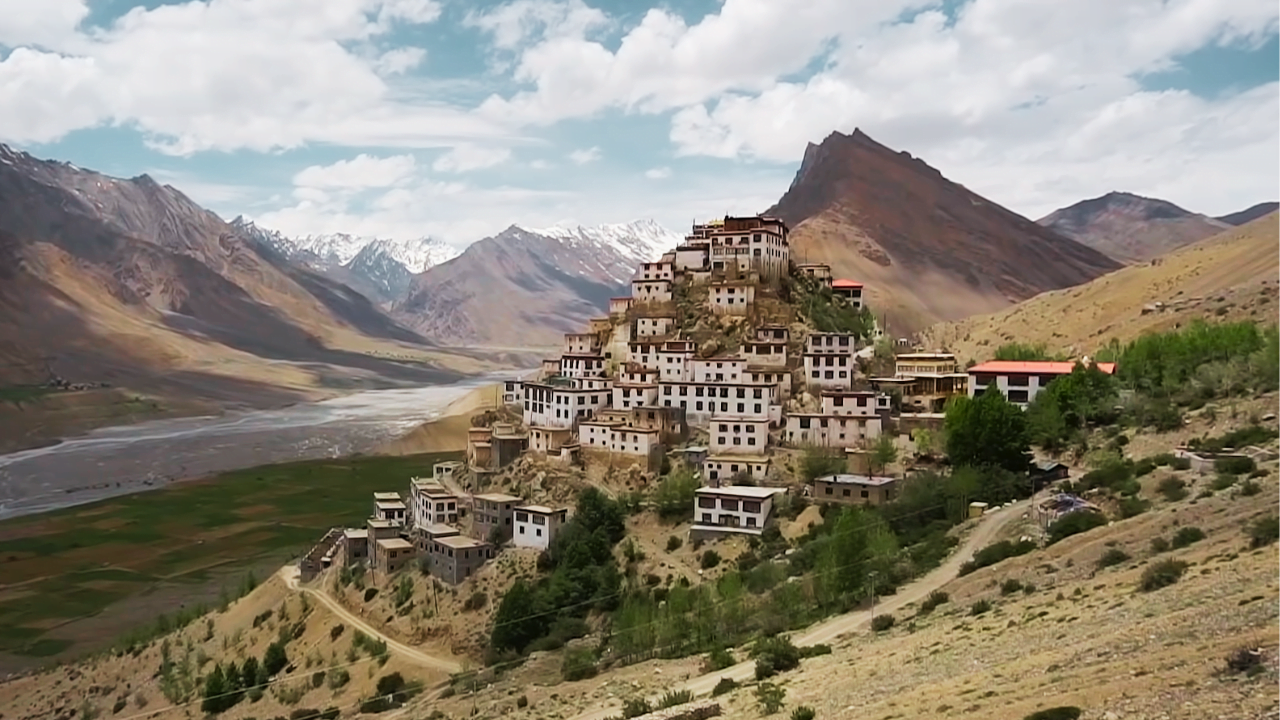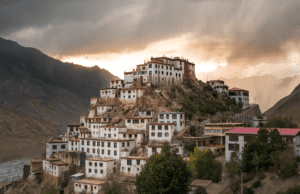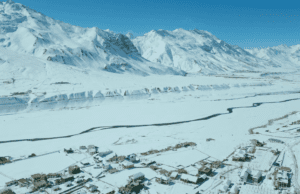Welcome to the magical “Monasteries of Spiti Valley 2024,” where the rough Himalayan landscapes seem to be engulfed by the echo of ancient wisdom, and time seems to have stopped. We cordially welcome you to accompany us on this year’s historical odyssey, which will take you deep into Spiti Valley and through the holy monastic havens that have withstood the test of time. It will be a voyage of discovery and tranquillity-Monasteries of Spiti Valley
Monasteries of Spiti Valley
Compared to its well-known neighbor Ladakh, Spiti Valley is farther away and more desolate. 1000-year-old monasteries can be found in the Spiti Valley. You won’t be able to stop marveling at the variety of monasteries, and you’ll undoubtedly wonder how they were constructed in this difficult environment a millennium ago. However, the peace of these monasteries will ensnare you at the same time. These magnificent monasteries are a must-see while in the Spiti Valley. To learn more about Buddhism, go to these monasteries and talk to the lamas, and will get detailed information on the Monasteries of Spiti Valley.
We will start on a compelling expedition to find out the mystery surrounding the Monasteries of Spiti Valley each of which is a symbol of the region’s rich religious and cultural fabric of the Monasteries of Spiti Valley.
1. Key Monastery (Monasteries of Spiti Valley)
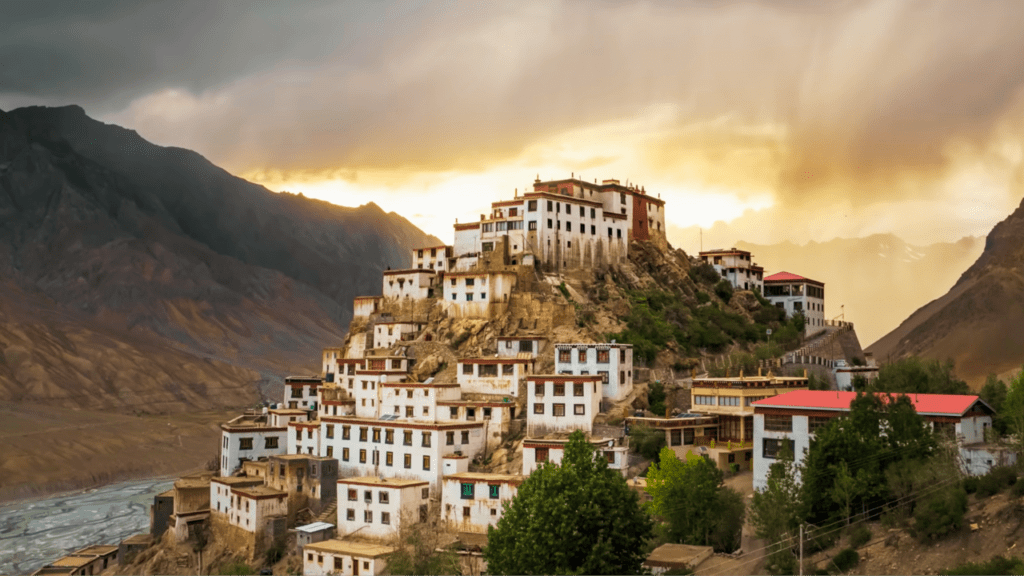
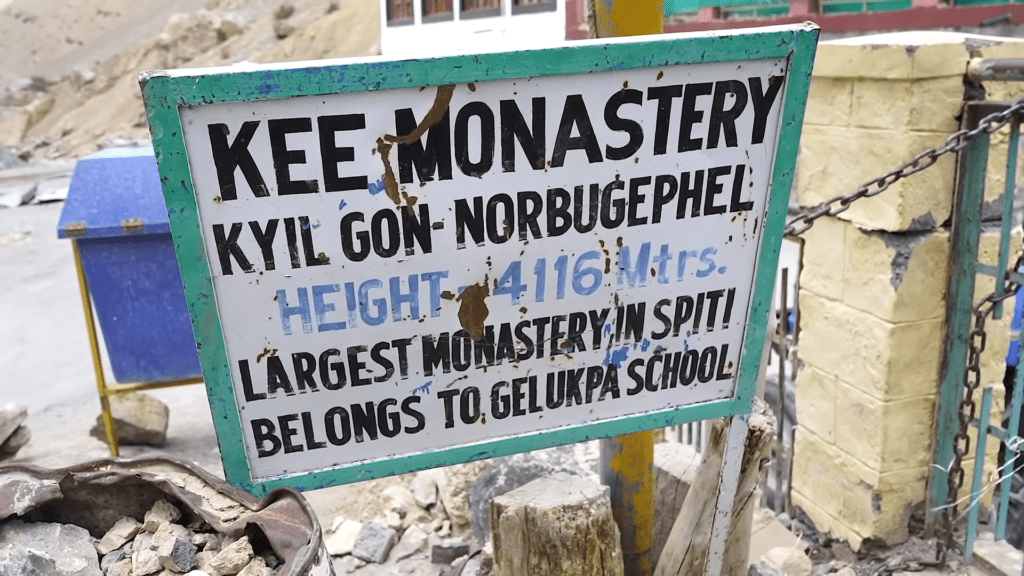
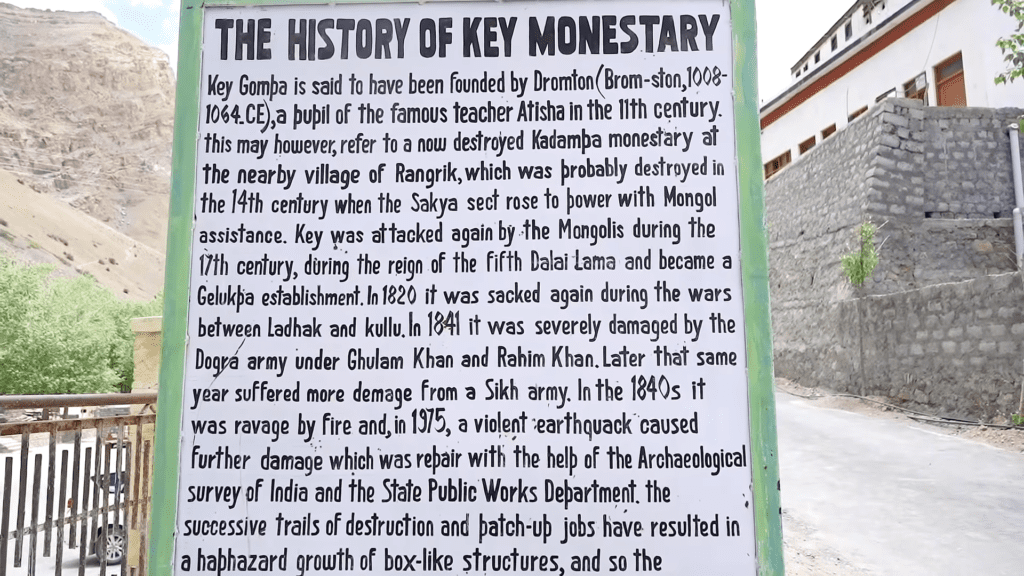
The largest monastery in Spiti Valley is without a doubt Key/Ki/Kee Monastery. For Lamas, it serves as a significant center of religion. It is situated in the Spiti Valley of Himachal Pradesh, India, near the Spiti River, at a height of 4,166 meters (13,668 feet) above sea level.According to legend, Dromton (Brom-ston, 1008–1064) founded Kye Gompa in the eleventh century. After being destroyed by invaders, Key Monastery was rebuilt multiple times.
It caught fire in 1840, and an earthquake severely damaged it in 1975. Nevertheless, frequent restoration and reconstruction have helped this stunning monastery maintain its beauty, so the attacks did not take away from its attractiveness.
It serves as a religious training center for lamas. It is believed to have been founded in the 11th century and is associated with the Gelug sect of Tibetan Buddhism. Upon entering the stunning monastery, you will be greeted by walls decorated with breathtaking artwork and paintings that showcase the religious architecture of the fourteenth century. While visiting the most breathtaking valley, you should stop by the Key monastery in Spiti Valley, which is a true architectural masterpiece. In my opinion Key Monastery is most beautiful scenic monastery out of the Monasteries of Spiti Valley.
Best Time To Visit Key Monastery
Summertime, from June to September, is the ideal season to visit Key Monastery. During this time, visitors can enjoy the monastery and its surroundings without being hindered by heavy snowfall and harsh winter conditions, as this is the warmer and more accessible season in Spiti Valley.
How to reach Key Monastery
Key Monastery, located in the Spiti Valley, is a significant Buddhist learning center and a popular tourist attraction. To reach Key Monastery, follow these steps:
- Reach Kaza: Kaza is the nearest town to Key Monastery and can be reached from Manali by road. There are plenty of buses and taxis available for this route
- Travel to Key Monastery: Key Monastery is just 15 km from Kaza. The best way to reach the monastery is by getting your own vehicle or renting a private cab. If you prefer public transportation, you can board a shared cab from the Kaza Bus Stand
- Timings and Entry Fee: The monastery remains open from morning 9 AM to evening 5 PM on all days. There is no entry fee at the monastery
2.Tabo Monastery (Monasteries of Spiti Valley)
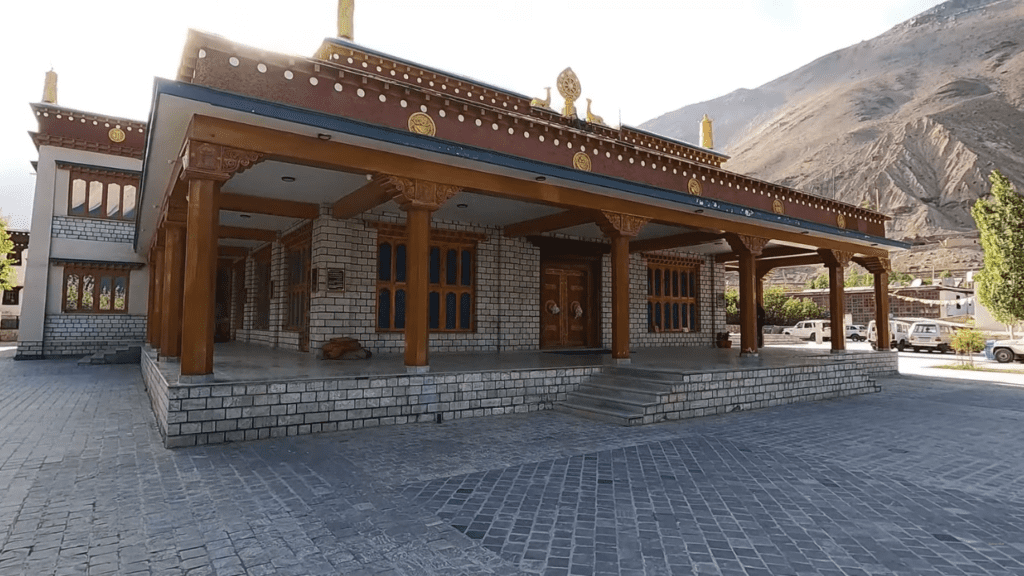
Tabo Monastery, also known as the ‘Ajanta of the Himalayas,’ is one of the most popular monasteries in the Lahaul and Spiti Valley. It was founded back in 996 A.D. This ancient structure stands on the barren, cold, and rocky desert of the Tabo valley at a height of 3050 meters. It has preserved the glorious heritage, traditions, and culture of Buddhism through the passage of centuries. The architecture of Tabo monastery is unlike any other Buddhist monasteries made only of mud.
Tabois noted for being the oldest continuously operating Buddhist enclave in both India and the Himalayas. abo Monastery is a UNESCO World Heritage Site and one of the oldest continuously functioning Buddhist monasteries in India.
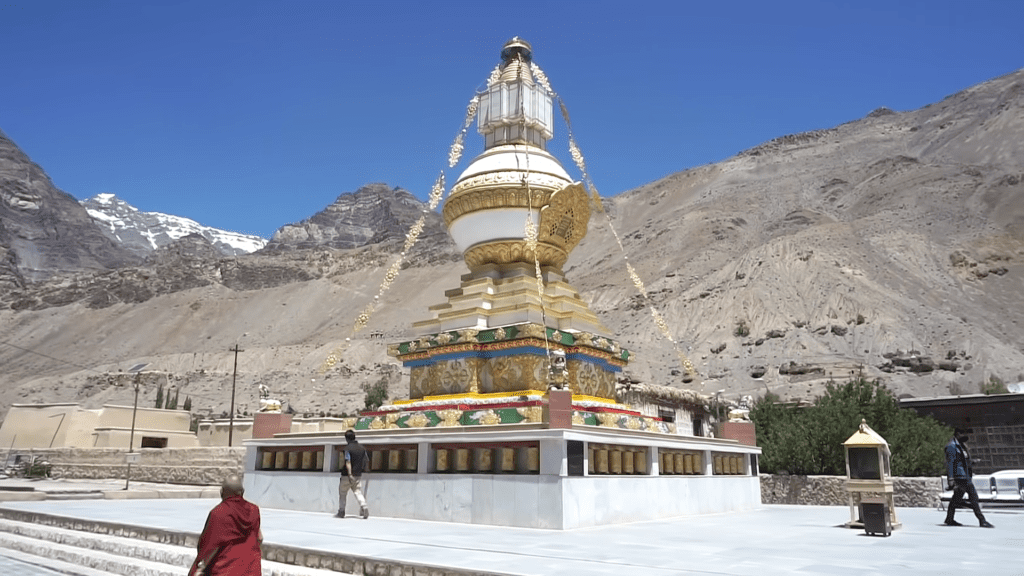
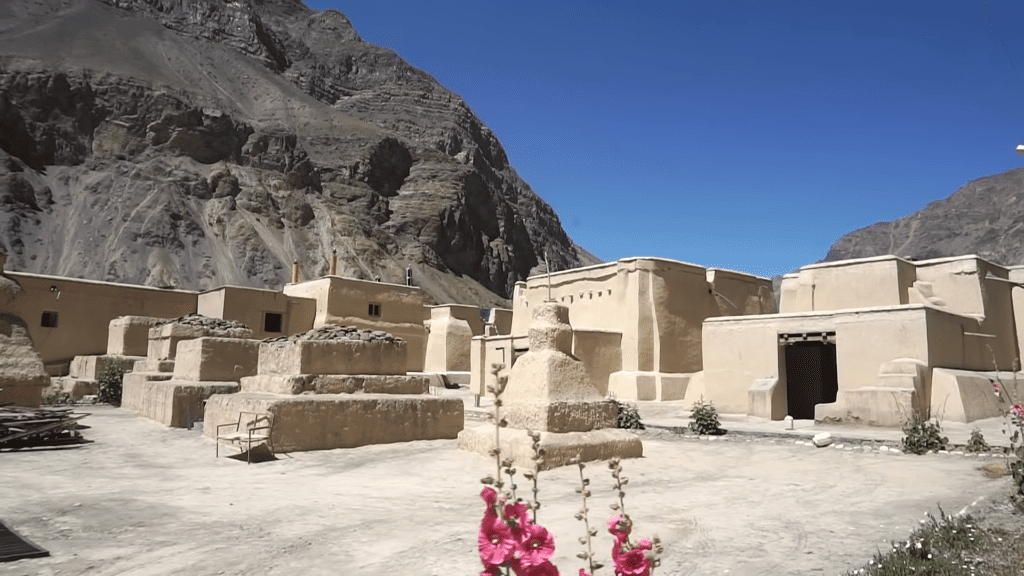
When the Dalai Lama attended the 2000 Kalchakra celebration, a sizable contingent of Buddhist monks and followers from all over the world attended. The monks use the caves and cliff-like formations above the monastery as places to meditate. There are 23 chortens in the Tabo Monastery complex. Depending on how they are used, the nine temples in the complex go by different names. The Archaeological Survey of India looks after the monastery because of its significance to history and archaeology.
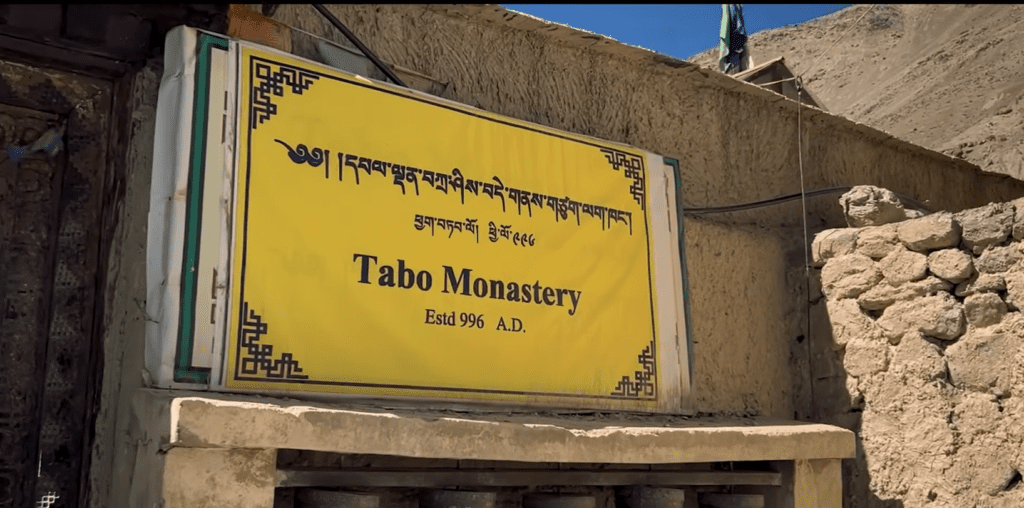
Best time to visit Tabo Monastery
The best time to visit Tabo Monastery in Spiti Valley is during the summer months from May to September. This period offers favorable weather with warm days, clear skies, and sunny days, making it ideal for outdoor activities such as hiking, sightseeing, and experiencing the local culture.
How to reach Tabo Monastery
To reach Tabo Monastery in Spiti Valley, you will first have to reach Tabo Village. The easiest way to reach Tabo is by road, either from Shimla via Narkanda, Rampur, Pooh, and Nako or from Manali via Rohtang Pass, Kunzum Pass, and Kaza. The road from Shimla remains open for all 12 months except for peak winters when heavy snowfall may cause roadblocks.
3. Dhankar Monastery (Monasteries of Spiti Valley)
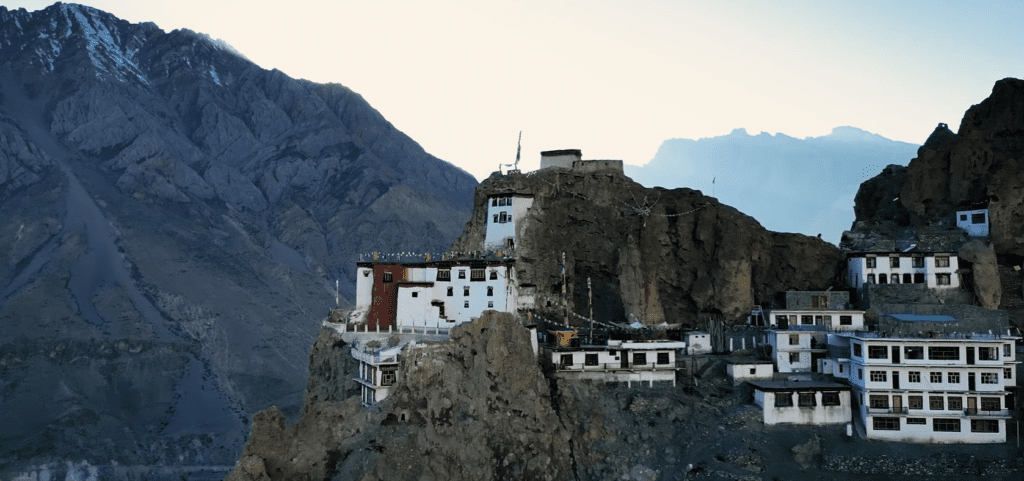
At a height of more than 3,800 meters in the Spiti valley, at the top of the cliff in the Dhankar village, this stunning monastery nestles between rocky spurs. It’s a fort monastery from the sixteenth century that was formerly used as a jail. A motorable road, suitable only for small vehicles, connects the over a millennium-old Dhankar Gompa to the rest of the valley. In the little village of Shichilling, beneath the old monastery, is a new monastery. The compound of the ancient monastery, which is connected to Rinchen Zanggpo, the Great Translator, consists of several interconnected multistory buildings.
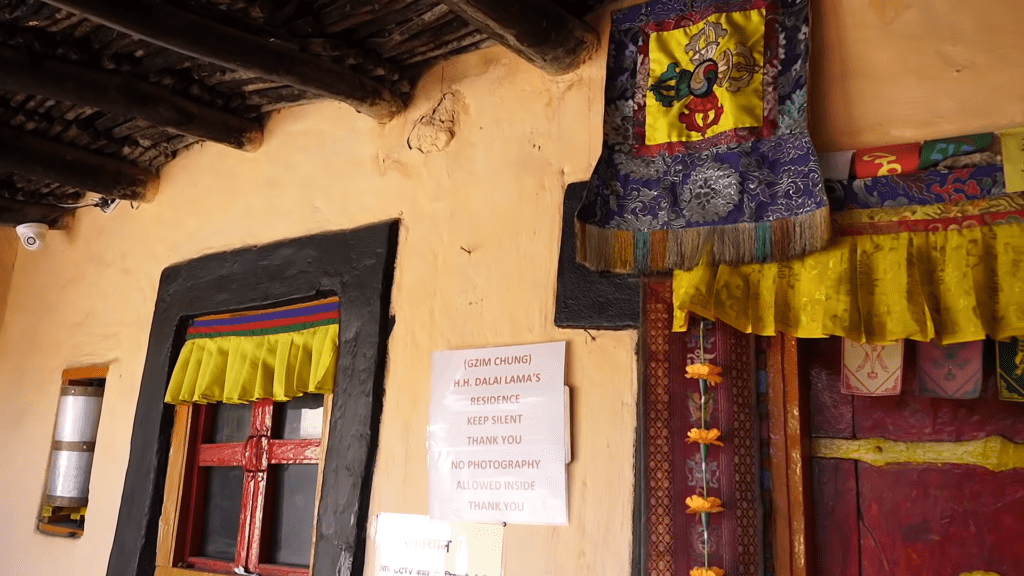
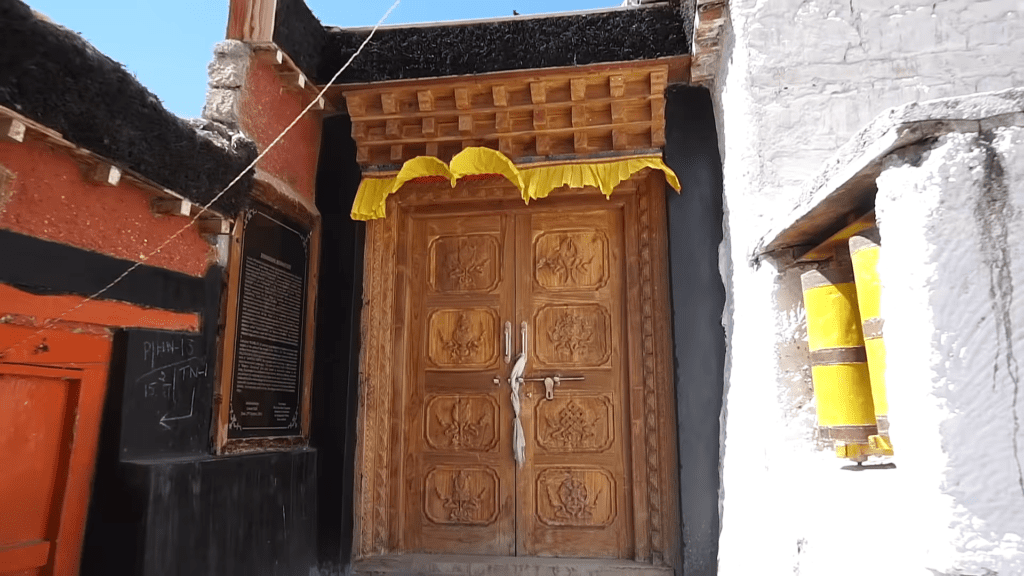
Additionally, there is a statue of Vairochana, also known as the Dhayan Buddha, inside the monastery. It features four figures sitting back to back. Buddhist thangkas, images of Medicine Buddha, and protective deities are also to be found, along with Buddhist scriptures written in Bhoti.
With its breathtaking setting and backdrop, the Dhankar is one of Spiti Valley’s most alluring landmarks. Approximately two kilometers uphill from the monastery is the lesser-known Dhankar Lake. Every time they travel to Dhankar to visit the Dhankar monastery, a lot of people stop by this picturesque lake.
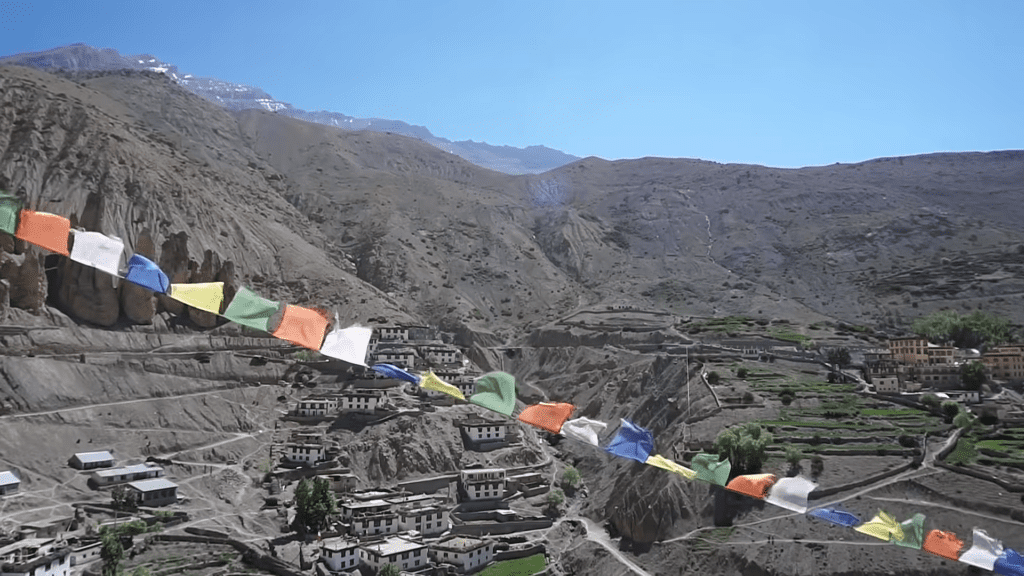
Best time to visit Dhankar Monastery
The best time to visit Dhankar Monastery is from May to October when the roads are clear of snow and the weather is relatively pleasant. During this period, the weather is warm and dry, and the views are at their best
How to reach Dhankar Monastery
To reach Dhankar Monastery, you can follow these steps:
- Reach Kaza: Kaza is the nearest town to Dhankar Monastery and can be reached from Shimla via Narkanda, Rampur, Pooh, and Nako or from Manali via Rohtang Pass, Kunzum Pass, and Kaza
- Travel to Dhankar Monastery: Dhankar Monastery is approximately 24 km from Kaza. You can either get your own vehicle or rent a private cab to reach the monastery. Alternatively, you can take a bus from Shimla to Reckong Peo and then from Reckong Peo to Kaza, dropping off between Tabo and Kaza to reach the monastery
- Timings and Entry Fee: The monastery remains open from morning 9 AM to evening 5 PM on all days. There is no entry fee at the monastery
4. Lhalung Monastery (Monasteries of Spiti Valley)
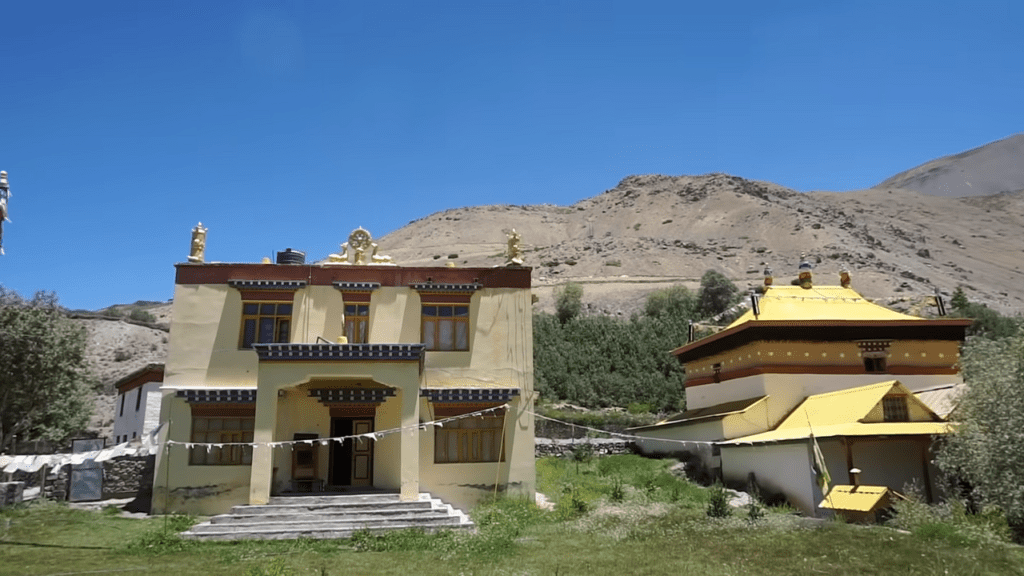
Lhalung Monastery, also known as Lalung Monastery or Golden Temple, is one of the earliest monasteries founded in Spiti, Himachal Pradesh, India, dating back to the 10th century. It is located in Lhalung Village, surrounded by the Tangmar mountains. The monastery is believed to have appeared on its own celestial creation and is known for its sacred idols and the belief that the color of the surrounding mountains changes with the mood of the deities.
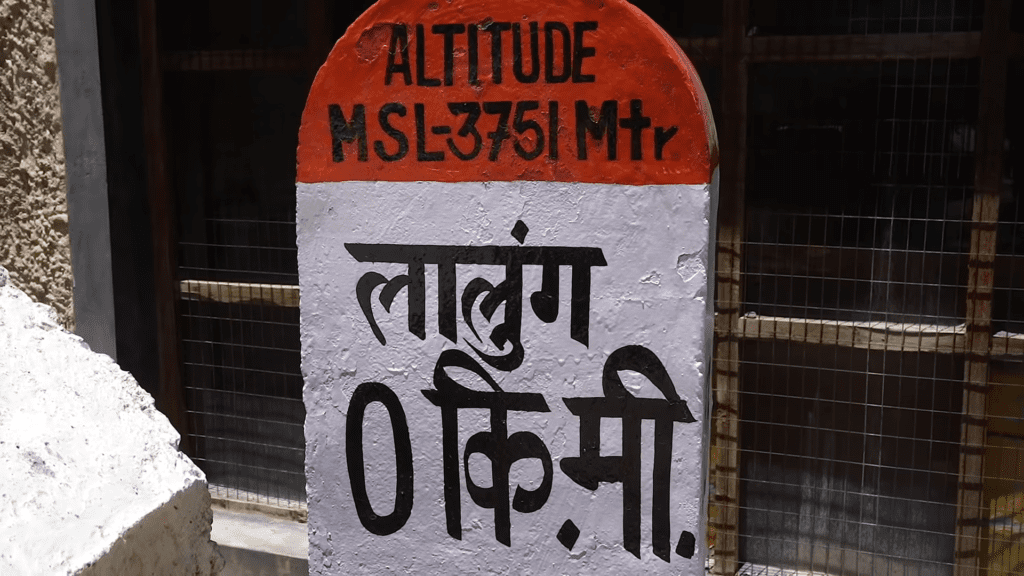

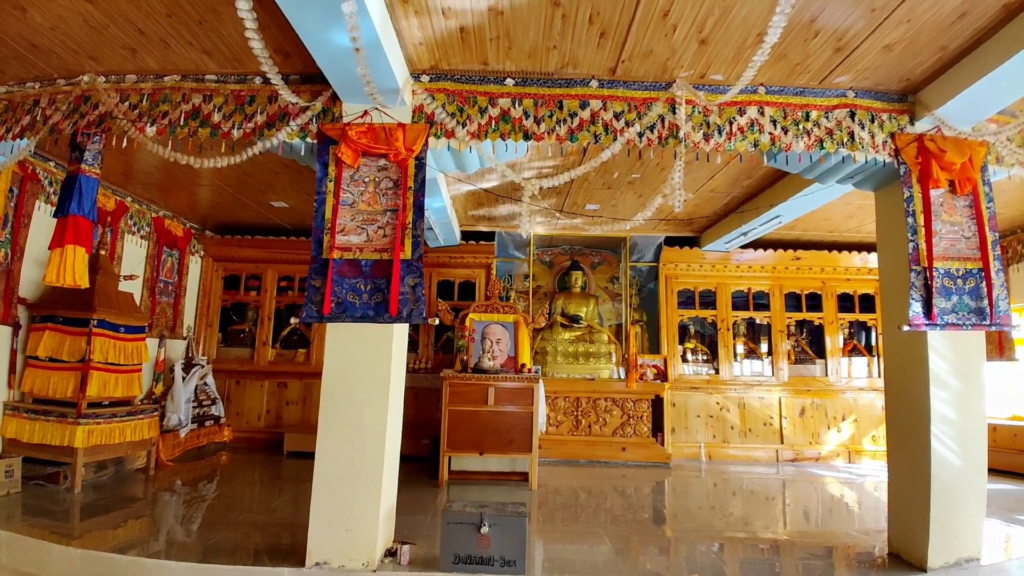
The village has a lot of greenery and farming land, with potatoes and sweet peas being the main crops. There are a few homestays available for tourists in the village. The monastery has a huge library with a collection of 101 Buddhist scriptures and Thangkas depicting the life of Buddha.
Lha, which means deities, and lung, which means land, literally translate to “land of the gods” in the name Lhalung. The deity Lhalung is said to emerge from Tangmar Mountain, which is located beyond the village, and is considered the chief of all the valley’s deities. According to legend, the mountain periodically changes color to reflect the god’s mood, turning yellow for joy or red for anger.
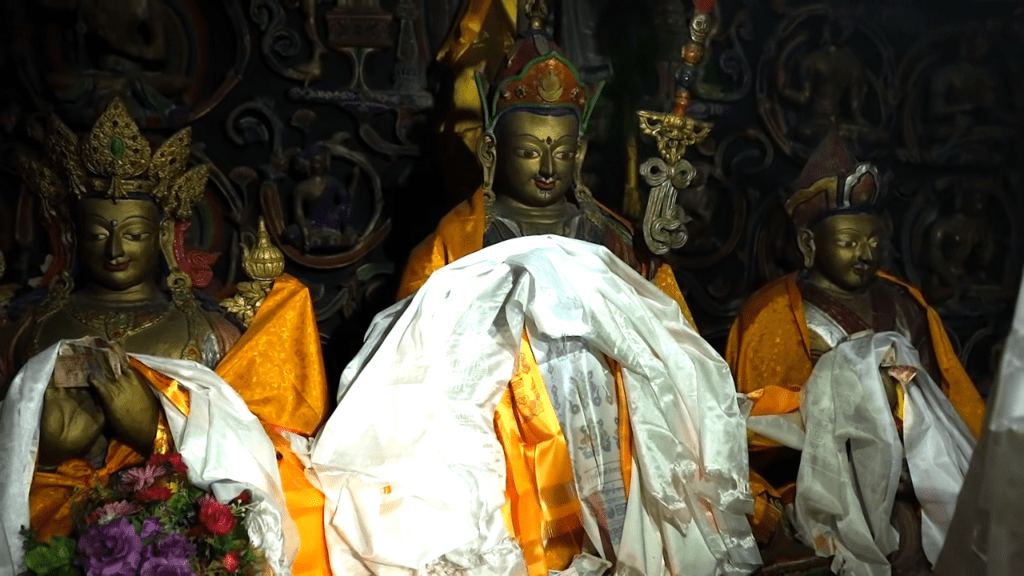
Best time to visit Lhalung Monastery
The best time to visit Lhalung Monastery is from March to October During this period, the weather is relatively pleasant, and the roads are clear of snow, making it an ideal time for tourists to explore the monastery and its surroundings. Lhalung Monastery is located in Lhalung Village, surrounded by the Tangmar mountains, and is known for its sacred idols and the belief that the color of the surrounding mountains changes with the mood of the deities.
How to reach Lhalung Monastery
To reach Lhalung Monastery, you can follow these steps:
- Reach Kaza: Kaza is the nearest town to Lhalung Monastery and can be reached from Shimla via Narkanda, Rampur, Pooh, and Nako or from Manali via Rohtang Pass, Kunzum Pass, and Kaza.
- Travel to Lhalung Monastery: Lhalung Monastery is approximately 14 km from the main road and is the largest village in the region. You can either get your own vehicle or rent a private cab to reach the monastery. Alternatively, you can take a bus or taxi from Shimla via Kinnaur to Kaza and then proceed to Lhalung Monastery
- Timings and Entry Fee: The monastery remains open from morning 9 AM to evening 5 PM on all days. There is no entry fee at the monastery.
5. Kungri Monastery (Monasteries of Spiti Valley)
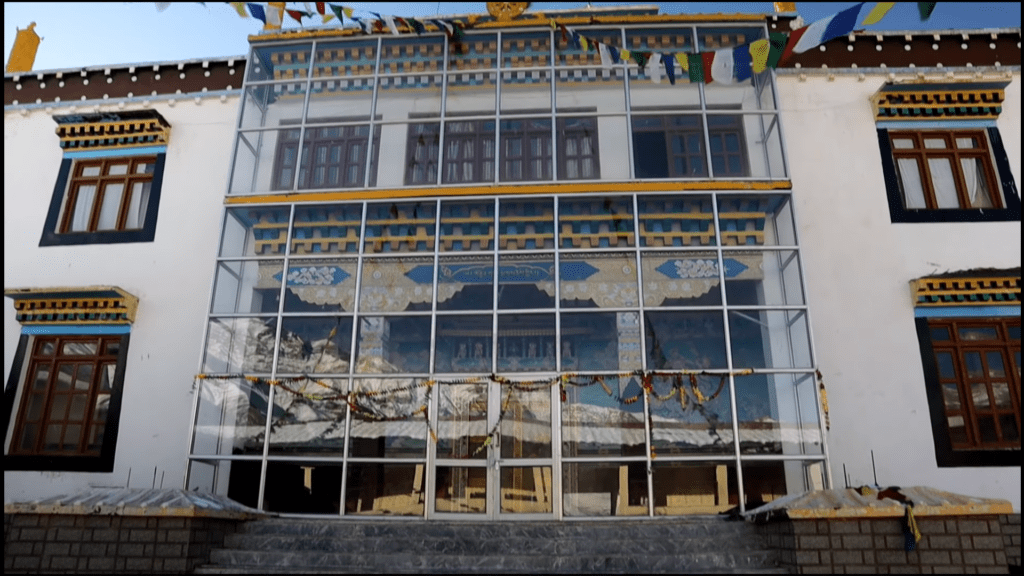
In the Pin Valley of Himachal Pradesh, the breathtaking Kungri Monastery is situated about 3 km from Gulling and 10 km from Attargo. The town of Attargo is about 12 km away from the Spiti sub-divisional district headquarters. To get to the Pin Valley, the majority of which has been designated a National Park, one must cross the breathtaking Spiti River.
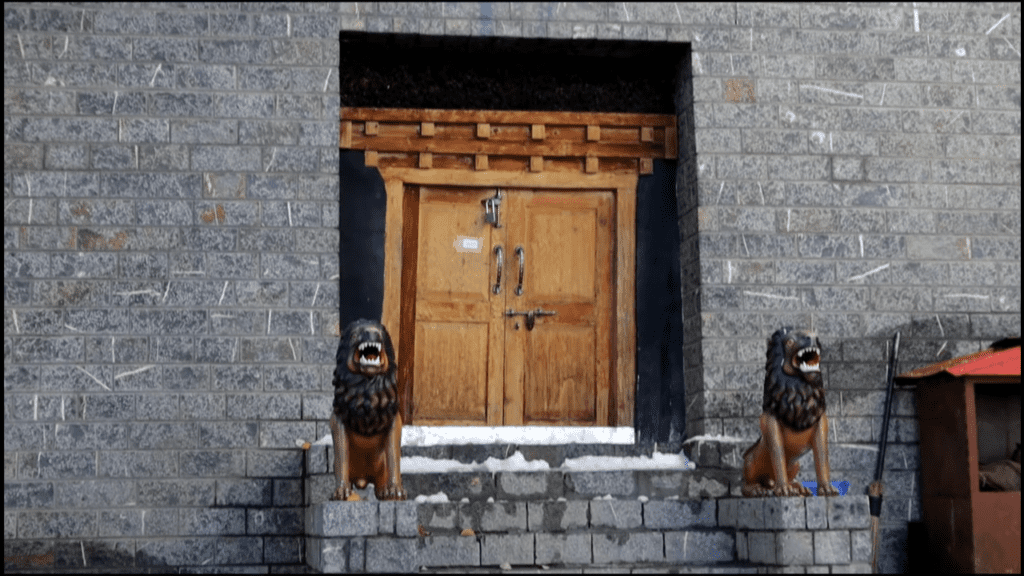
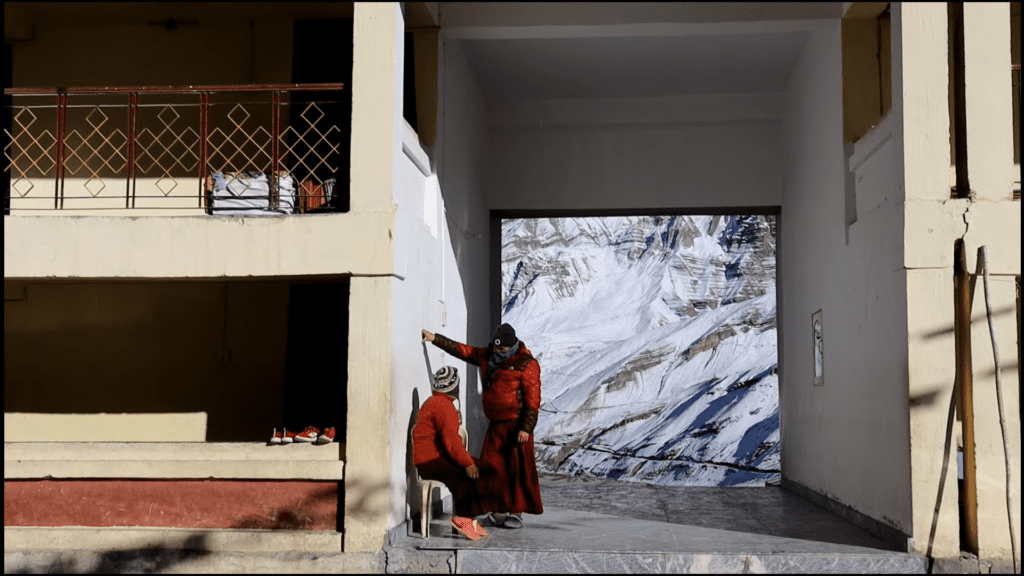
The only monastery in the Lahaul and Spiti Valley that is a part of the Nyingmapa order of Buddhism is the Kungri Monastery, which is also the second-oldest Gompa in the region. It is also the Tibetan Buddhism’s oldest order.
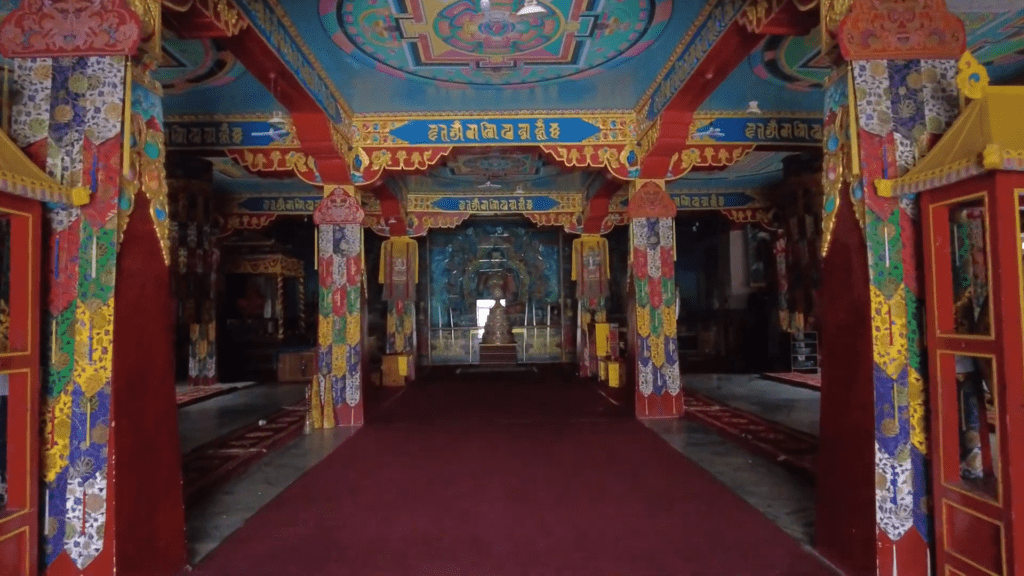
The Kungri Monastery is made up of three distinct rectangular blocks that are all oriented toward the east. It is thought to have been constructed in the first part of the fourteenth century. It illustrates the lasting influence of the Tibetan tradition that has existed in the Pin Valley from ancient times to the present.
Best time to Visit Kungri Monastery
The best time to visit Kungri Monastery is from May to October when the weather is relatively pleasant, and the roads are clear of snow During this period, visitors can enjoy the stunning natural beauty of the Pin Valley and explore the monastery’s ancient architecture and cultural significance. The visiting duration is around 5-6 hours on average, and there is no entry fee at the monastery
How to reach Kungri Monastery
To reach Kungri Monastery in the Pin Valley of Lahaul and Spiti, Himachal Pradesh, you can follow these steps:
- Reach Kaza: Kaza is the nearest town to Kungri Monastery and can be reached from Shimla via Narkanda, Rampur, Pooh, and Nako or from Manali via Rohtang Pass, Kunzum Pass, and Kaza.
- Travel to Kungri Monastery: Kungri Monastery is located around 10 km from Attargo and 3 km from Gulling. You can either get your own vehicle or rent a private cab to reach the monastery. Alternatively, you can take a bus from Kaza to Attargo and then proceed to Kungri Monastery.
- Timings and Entry Fee: The monastery remains open from morning 9 AM to evening 5 PM on all days, and there is no entry fee at the monastery.
6. Komic Monastery or Tangyud Monastery (Monasteries of Spiti Valley)
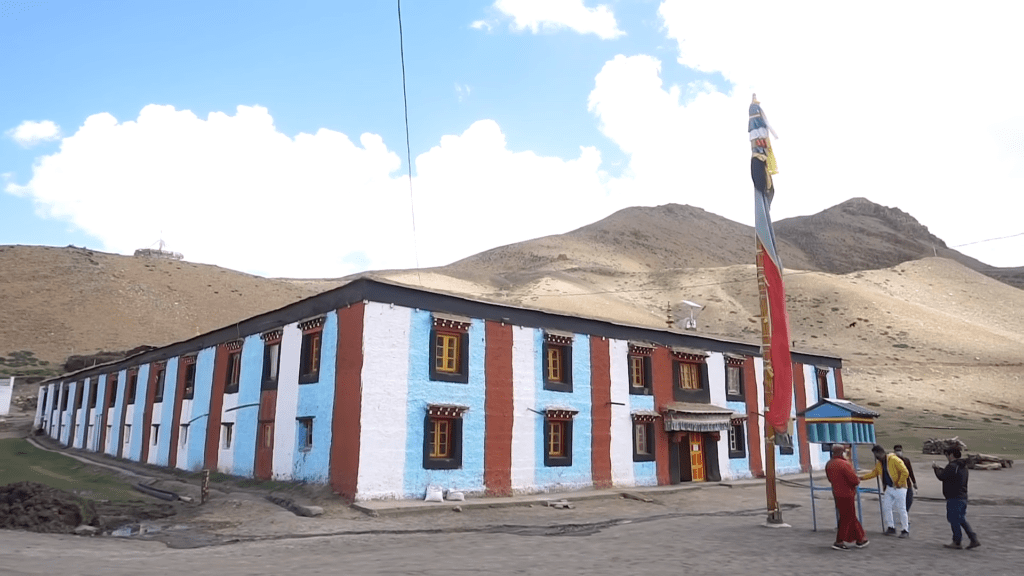
Komic Monastery is a prominent Buddhist monastery located in the Spiti Valley of Himachal Pradesh, India. It is known for its unique architecture and rich cultural heritage. The monastery is situated in Komic village, which is the world’s highest village accessible by road, at an altitude of 15027 feet above sea level.
Komic, a remote village in the Spiti valley, translates literally as “eye of a snow cock” (Ko – snow-cock, mic – eye). Known for being the world’s highest village connected by a motorable road, Komic is a popular destination for most people visiting Spiti.
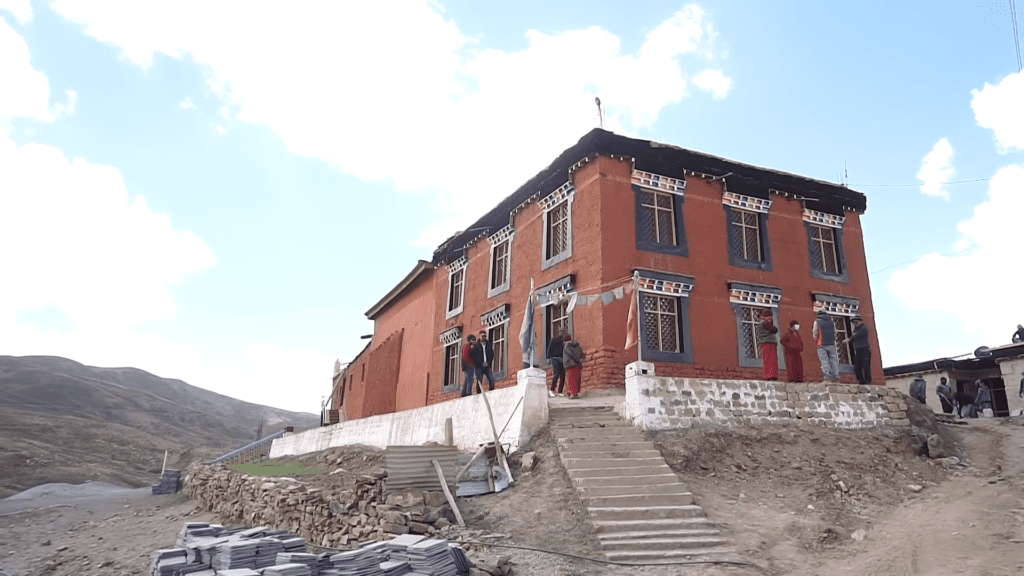
When guests arrive at Komic Monastery, they are met with an incredible sight. The architecture of the monastery exhibits a perfect harmony between man-made structures and the unspoiled beauty of the Himalayan mountains, blending in beautifully with the natural surroundings. You are transported to a place of peace and reflection by the whitewashed walls covered in colorful murals, prayer flags waving in the breeze, and the melodic chants of the monks.
A small group of Buddhist monks who continually follow the teachings of Tibetan Buddhism reside in the monastery. They follow a strict and uncomplicated lifestyle devoted to their spiritual practices and enlightenment. Engaging in conversations about philosophy, learning about their customs and ancient rituals, and gaining insights into their way of life are all made possible by interacting with these monks.
Best time to Visit Komic Monastery
The best time to visit Komic Monastery is during the summer months, from late May to early October This period offers favorable weather conditions, with warm days and clear skies, making it an ideal time for outdoor activities and sightseeing. Additionally, the monastery is accessible during this time, as the roads are clear of snow. Keep in mind that the Spiti Valley is a remote region, and it is advisable to plan your trip and book any necessary transportation and accommodation well in advance.
How to reach Komic Monastery
Komic Monastery is located in the Spiti Valley of Himachal Pradesh, India. To reach Komic Monastery, you can follow these steps:
- Reach Kaza: Kaza is the nearest town to Komic Monastery and can be reached from Shimla via Narkanda, Rampur, Pooh, and Nako or from Manali via Rohtang Pass, Kunzum Pass, and Kaza.
- Travel to Komic Monastery: Komic Monastery is located in Komic village, which is the world’s highest village accessible by road, at an altitude of 15027 feet above sea level. You can either get your own vehicle or rent a private cab from Kaza to reach the monastery. Alternatively, you can take a bus from Kaza to Attargo and then proceed to Komic Monastery
- Timings and Entry Fee: The monastery remains open from morning 9 AM to evening 5 PM on all days, and there is no entry fee at the monastery.
7. Gue Monastery (Monasteries of Spiti Valley)
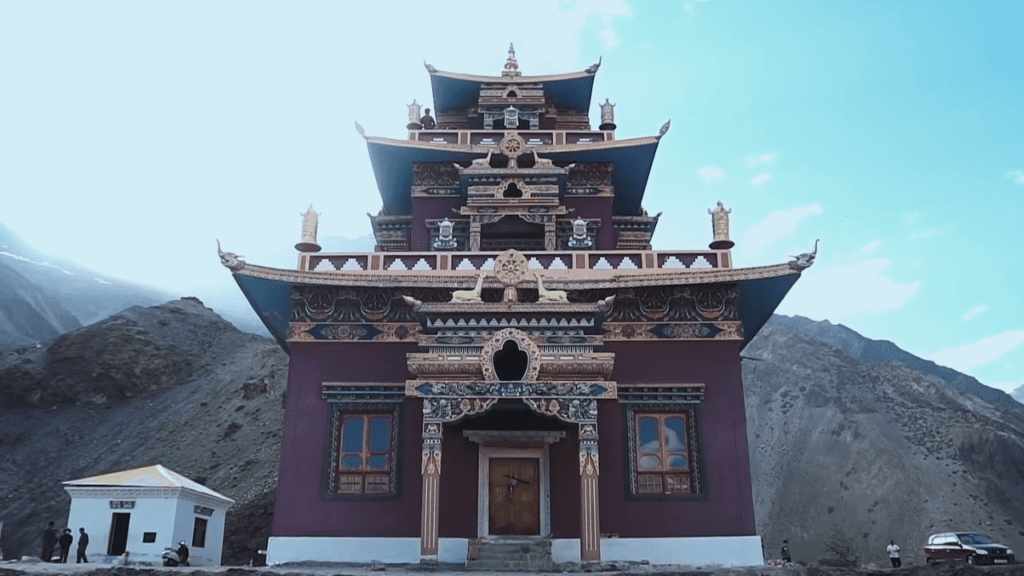
Gue is a village located in the Lahaul & Spiti district of the state of Himachal Pradesh in India. It is about 40 km from the Tabo Monastery. which is well-known for housing the 500-year-old mummy of Sangha Tenzin, a Buddhist monk who is thought to have begun the process of mummification while still alive. The monastery is surrounded by mountains on all sides and is situated very close to the Indo-Tibetan border.
This is an extremely uncommon instance of natural mummification; the majority of mummies that we come across in literature have been embalmed and then covered in linen. Monks use a slow process of starvation while seated to mimic the natural process of mummification. After that, the deceased is kept in an underground chamber for three years to finish drying out. To date, just thirty such mummies have been discovered, the majority of which are in Japan. Sangha Tenzin’s mummy is remarkably well preserved, including her skin and hair.
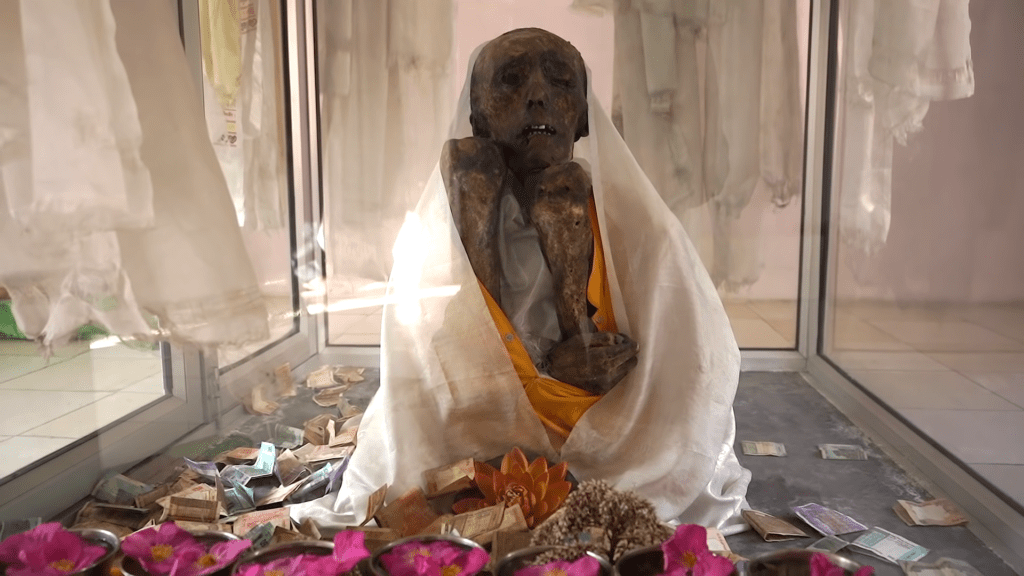
Best time to visit Gue Monastery
The best time to visit Gue Monastery is from June to the end of September. During this time, the weather is pleasant, and the roads are clear, making it easier to reach the village. It is not advisable to visit Gue during the winter season as the village is isolated, and the roads may be blocked due to heavy snowfall
How to Reach Gue Monastery
To reach Gue Monastery, you can follow these steps:
- Start from Kaza: Gue Monastery is about 82 km from Kaza, which is a well-connected town in the Spiti Valley. You can take a taxi or hire a private vehicle to reach Gue
- Drive on NH-505: From Kaza, drive on National Highway 505 towards Sumdo. After crossing Sumdo, look for a road to the right that leads to Gue Village.
- Follow the road: The road to Gue is rough and narrow, but it will take you to the village. The journey from the bridge to Gue takes approximately 40-45 minutes.
Conclusion
The Spiti Valley is a place of unparalleled beauty, with its surreal landscapes, ancient monasteries, and resilient communities. It challenges the typical perception of beauty, inviting visitors to embrace the raw and unfiltered charm of a high-altitude cold desert.
The monasteries, such as the Tabo Monastery, with its priceless collections of Thangkas, manuscripts, and well-preserved statues, offer a glimpse into the rich cultural and historical heritage of the region. Hope I covered all the detailed about the Monasteries of Spiti Valley.
The Gue Monastery, home to the 593-year-old mummy of Sangha Tenzing, is a testament to the mystique and spiritual significance of the area. As you conclude your journey through the monasteries of Spiti Valley, you carry with you not just memories of breathtaking landscapes, but also a deep appreciation for the unique blend of nature and culture that defines this extraordinary place.


